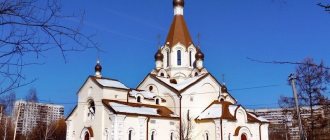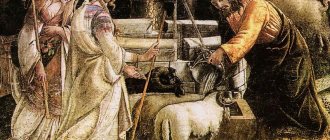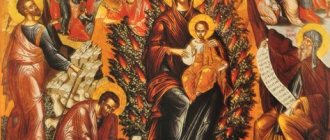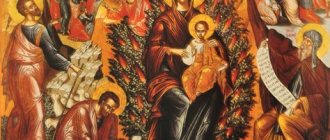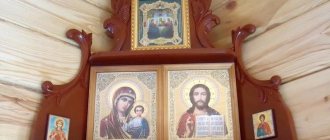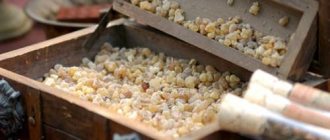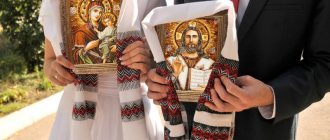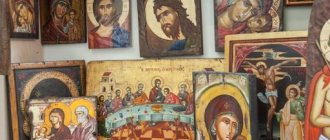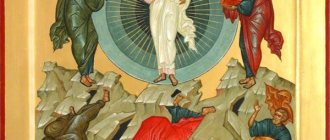Burning bush bush
Hermitage in the Sinai mountains
View of the bush
Prophet Moses
A lot has been written about what the burning bush is, but most of the information is presented preserving Old Slavonic words and sentences, which are very different from modern speech and are not always understandable. We present to you an overview of what the burning bush is, compiled in simple words accepted today in colloquial and literary speech.
What is the Burning Bush
According to the description of the second book of the Pentateuch (Torah) - “The Burning Bush” is the ancient name of a thorn bush or blackberry in the fire of which God appeared to the prophet Moses. Moses, then wandering through the desert, being at the foot of Mount Sinai, on the slope of the mountain saw a thorn bush burning with a bright flame.
Seeing this unusual phenomenon, Moses came closer, and God appeared before him in the fire of a burning thorn bush and from the fire of a burning bush ordered Moses not to approach the place of the miraculous phenomenon and to take off his shoes. After which the Lord called Moses to serve the Jewish people, who were living in slavery to the Egyptians at that time, for which he had to lead the Jewish people from Egypt to the Promised Land.
Application in landscape design and care
Ash tree is a very attractive and showy flower, with bright corollas and stems up to 90 cm high. It is a perennial ornamental deciduous herbaceous plant, which is planted as:
- a bright point in the design of an alpine slide;
- romantic garden decorations in country style;
- high accent flower garden and landscape park.
To avoid accidents, it is not recommended to decorate garden paths, barbecue areas and playgrounds for children with dictamnus. Garden guests must be warned about the dangerous properties of the plant.
Care and propagation of the ash tree is quite simple. It is usually grown from seeds collected in August. They need to be sown before winter or in winter (in the southern regions) on seedling beds, from where they are then planted to a permanent place. In addition to propagation by seeds, they practice dividing the bush and rooting cuttings.
Currently, traditional medicine uses the plant externally
Fertilizing dictamnus with complex fertilizer is carried out once a year, after flowering, watering only during droughts; the plant is very resistant to pests and diseases.
Bushes are replanted only in early spring or September, then they take root better. During transplantation and division, they are brought into a decorative form: dried, broken and faded shoots are removed. Always wear gloves when working, especially in clear weather.
Who is Moses
According to the Holy Scriptures, Moses was the son of the Jewish family of Amram and Jochebed; he was born around 1570 BC. At that time, the Israelis had already lived in Egypt for almost 400 years and, thanks to their intelligence and hard work, were quite wealthy people and their number gradually increased, there were almost a million Israelis at that time. The Egyptian pharaoh, fearing that the Jews could become a large nation, made the Jews state slaves, and moreover, he gave the order to kill all newborn Jewish boys. Moses' mother Jochebed, in order to save her son, hid him in a basket and floated it along the waters of the Nile.
The floating basket was seen by the daughter of Pharaoh, who loved to swim in the Nile, and when she heard crying, she saved the baby from death. And although she guessed that there was a Jewish baby in the basket, she took him to the palace and raised him as her son. Moses grew up among rich and noble people and was trained as their equal.
When he was already forty years old, one day, having seen how an Egyptian overseer mocked working Jews, he killed the overseer in anger. And so as not to be punished for this, he fled into the desert.
While wandering near one of the wells, he met Zipporah and her sister, the daughters of a priest, for whom he interceded with the shepherds who did not allow them to draw water.
In gratitude for this, her father invited Moses to stay and live in their house. Zipporah became his wife and soon they had a son, Gersham. Moses was busy tending the sheep of Jethro, the priest of Midian, his father-in-law, and one day he found himself near Mount Sinai, where he saw a burning thorn bush.
What Moses saw at the Burning Bush
One day, when Moses was tending a flock of sheep, he came to Mount Horeb, as Mount Sinai was then called. Not far away, on the mountainside, they saw a thorn bush with a flame blazing above it, but for some reason the fire did not burn the branches of the bush. Interested in this unusual phenomenon, he came closer.
And then Moses heard a voice proclaiming to him:
- Moses! Moses!
Moses replied:
- Here I am.
- And a voice said to him: I am the God of your father, the God of Abraham, the God of Isaac and the God of Jacob. Do not come here, but first remove your shoes from your feet, for the place on which you stand is holy ground.
Moses hastily took off his shoes and covered his face, because he was afraid to look at God.
And God called to him from the flame of the bush:
“I know about the suffering of my people in Egypt; their cry of sorrow and request for help reached me. I say to you: go back to Egypt to Pharaoh, go there and lead my people, the children of Israel, out of Egypt.
Forty years of wandering
At the command of God, Moses returned to Egypt and, after many ordeals, led the Israeli people out of Egypt. 600 thousand Israelites left Egypt with Moses, but since Moses did not know where to go, three months later they again came to Mount Sinai, where Moses saw the burning bush. The Israelites camped at Mount Sinai for about a year, and Moses was at the top of the mountain all this time. It was at this time that he wrote his famous Pentateuch. And it was there on the top of the mountain that God again appeared to Moses and handed him the tablets with the Ten Commandments, which he brought to the people.
For a long time Moses led the Jews through the desert. Years of wandering caused numerous disturbances, murmurs and uprisings of the people, for which the Lord punished and condemned them to a 40-year wandering.
And only forty years later the Israelis came to the land of Canaan, where Lebanon, Syria, Palestine and Israel are located today. They settled on the land of what is now Palestine and Israel, but not all of them, many scattered around the world.
Collection, preparation and storage
The main medicinal raw materials of ash are roots and rhizomes. They are harvested in early spring or late autumn. The raw materials are dug up, washed, dried and split lengthwise into strips. These strips are laid out on a baking sheet or paper, dried in the shade under a canopy or in dryers at a temperature not exceeding 45 degrees.
Ash grass is harvested during the flowering period. It is cut with pruning shears, cut into pieces and dried in the shade. Like any other work with dictamnus, the collection of raw materials is carried out with gloves and closed clothing. Store dried raw materials in paper bags for no more than a year. The containers must be marked with labels marked: “Poisonous!”
The main medicinal raw materials of ash are roots and rhizomes
Veneration of the burning bush
The holy appearance of the burning bush did not remain forgotten. In the 4th century, hermits began to settle near Mount Sinai, and on the slope of the mountain, where that same thorn bush, called the burning bush, grew, they built a chapel. In 324, the Mother of Emperor Constantine, Saint Helena, at the request of the monks, ordered the construction of a chapel on this site - a chapel, around which over time a monastery was built, which was called the “Monastery of the Burning Bush”.
Dorothea, the daughter of one of the noble people of Alexandria, who was named Catherine at baptism, was buried near the Monastery. Three centuries later, the monks discovered her remains and transferred them to the temple at the monastery. Catherine was canonized and her relics are kept in the monastery. In the 11th century, all Christian humanity learned about the location of the relics of St. Catherine; the monastery of the Burning Bush became a place of pilgrimage for a huge number of believers. And then the Burning Bush Monastery was renamed the Monastery of St. Catherine in her honor.
The main shrines of the Monastery of St. Catherine are the Burning Bush bush and the relics of the Holy Great Martyr Catherine. The monastery houses the Church of the Transfiguration, behind the altar of which, above the roots of the Burning Bush, is the Chapel of the Burning Bush. The Burning Bush bush itself was transplanted a few meters from the chapel, where it still grows today. The altar of the chapel is not covered by the iconostasis, so all pilgrims can see the hole in the marble slab covered with a silver shield, the place where Kupina used to grow. Pilgrims can enter the chapel, but first remove their shoes. The Burning Bush itself can be seen from the outside of the chapel.
The Burning Bush is revered not only by Christians. Muslims also consider Mount Sinai and the location of the bush to be sacred. It is believed that the Prophet Muhammad himself patronized the monastery, so in the 9th century a Muslim mosque was built in the monastery, which became the protection of the monastery from Muslim attacks and protected it from destruction. In the 12th century, a Catholic chapel was built in the Monastery. Catholics founded a special knightly order that provided assistance to pilgrims going to the monastery.
Medicinal properties, application and possible harm
Yasenets is not included in the State Pharmacopoeia of the Russian Federation and is not used by official medicine anywhere in the world. There have been no studies on the medicinal aspects of the plant and the effects of its use. However, traditional healers attribute the following medicinal properties to it:
- sedative;
- diuretic;
- anthelmintic;
- antifever;
- anti-inflammatory.
Medieval healers tried to remove warts and rejuvenate the skin using the juice of the dictamnus herb, and used decoctions to treat dysentery. Currently, traditional medicine uses the plant externally to treat mite-borne scabies, urticaria, mastopathy, and dermatitis. Ash decoction is used internally as an anthelmintic and sedative.
Self-use of plant preparations is not recommended due to the high content of alkaloids in its tissues, which can cause severe headaches and general poisoning.
Icon of the Mother of God “Burning Bush”
The Icon of the Mother of God “The Burning Bush” is one of the most revered icons. Today there are several versions of this icon, painted at different times, but the oldest, painted by an unknown icon painter, was presented as a gift to the Russian people in 1390 and is located in the Moscow Kremlin, in the Annunciation Cathedral.
In the center of the icon is an image of the Mother of God and Child. This image is enclosed in an eight-pointed star formed by two quadrangles - green and red. Around are images of Old Testament scenes: Moses before the Bush, Jacob's dream, Ezekiel's Gate and the Tree of Jesha. Another theme of the icon is the service of the angels to the Mother of God and the worship of the heavenly powers to the miraculous birth of God from the Virgin - their images are located in the rays of an eight-pointed star; among them are archangels and nameless angels - personifications of the elements. It is believed that this icon saved Moscow from complete destruction as a result of a fire during the war with Napaleon. Since then, the Burning Bush icon has been considered a protector of housing and people from fire. Russian firefighters call the “Burning Bush” their patroness and intercessor.
One of the most famous icons, “The Burning Bush,” from the late 18th century, is located in the Epiphany Cathedral. At the bottom of the icon are the words from the troparion and the date of its renewal: “The imams do not provide any other help. The imams have no other hope, except for You, the mistress. Help us, we rely on You and boast in You. We are your slaves. Let us not be ashamed. Resumed on April 1835, 2nd day.”
Another Icon, “Our Lady of the Burning Bush,” from the late 16th century, is located in the Solovetsky Monastery. They claim that it was this icon that helped the Gulag prisoners in Solovki to survive, some of whom, even after liberation, took monastic vows and remained in the Monastery.
Burning bush - a plant that burns but does not burn out
In many mountainous rocky places in Europe and Asia grows an unusual shrub whose Latin name is Dictamnus, a small genus from the Rutaceae family. Named after one of the mountains on the island of Crete. In Russia, this shrub is more often called “ash tree,” although the popular name for this plant is “Burning Bush.” Ash tree is a herbaceous perennial with powerful woody roots going deep into the ground. The height of the bush is 60-80 cm, sometimes up to 1 meter, the diameter of the bush is about 1 meter. Blooms in late June - early July. Stands out among others for the beauty of its flowers. But when burned, the burning bush has a sharp unpleasant odor, reminiscent of the smell of medicine or orange peel. There are several types of ash, this is what it looks like growing in the Far East.
It is named so because of its unusual and interesting feature, which is that if on a windless day you bring a lit match to the flowers and fruits of this plant, a short-term flame will flare up above them with a distinct pop, and the plant itself will not be affected by this fire. suffers.
They say that on a hot sunny day, fire can appear on its own from the rays of the sun. But in our relatively cool and humid climate, this can be seen very rarely. But in the Caucasus, where the white Caucasian ash tree grows, this phenomenon can be observed.
The fact that fire can occur above this plant is quite simply explained from a scientific point of view. The thing is that this plant secretes essential oils in large quantities, which in hot weather intensively evaporate from its flowers and fruits. This is most pronounced during the period of seed ripening. Other popular names for this shrub are wild star anise, volcana, ash tree, bodan, ash tree, bergenia, but it is better known as burning bush. It received this name because there is an opinion that this is the same burning bush bush mentioned in the Old Testament.
The burning bush looks like a beautiful flower, but it is very dangerous for humans. The essential oils that the ash tree produces are poisonous. If you pick them up while the fruits are ripening, you can get severe poisoning. At first you won’t feel anything, but the next day the temperature will rise, accompanied by severe weakness on your hands and there will be a burn with blisters and blisters. The burn does not go away for a long time and even after healing, scars remain. Severe skin damage over a large surface is life-threatening. Therefore, when you see such a bush, do not approach or touch it, or better yet, do not even breathe near it.
The burning bush in the fire of which God addressed Moses is one of the Old Testament symbols associated with the prototype of the Mother of God. The main message of the burning bush is the miracles of God, which are also manifested in the modern world; they are quite real and tangible. The burning bush is engulfed in flames, but remains intact and is only cleansed by the blessed fire. The presence of this symbol has a beneficial effect on every person. If you have the opportunity to visit the monastery of St. Catherine, being at the Burning Bush bush, be sure to make a wish and it will certainly come true.
Distribution and habitats
Yasenets, or burning bush, is a heat-loving plant that grows in Europe, in the lower reaches of the Volga, along the shores of the Black and Caspian Seas, where it is called Caucasian ash. The climatic conditions of southern Siberia, as well as such Asian countries as Turkey, Syria, Iran, and the central regions of China and Korea are also suitable for it.
In nature, the flower prefers moderately moist soils with good drainage; it readily settles on rocky and sandy slopes, on the edges, and among the undergrowth of light forests. It is cultivated almost everywhere, except in the Far North. This is one of the rare crops that tolerates alkaline soils well.
